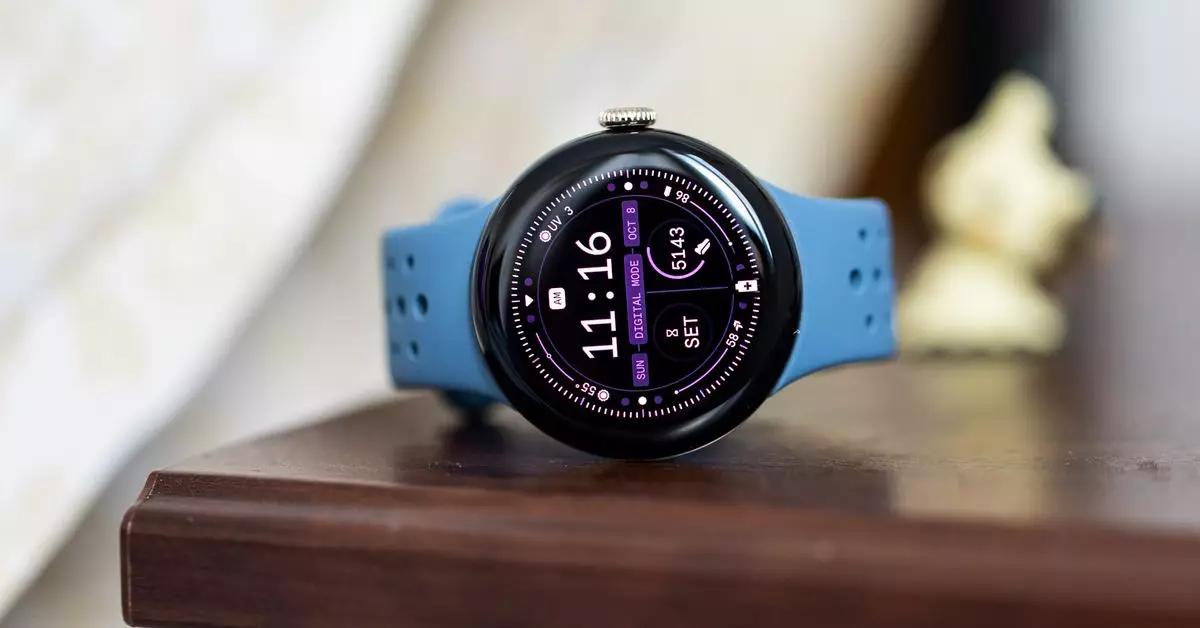In the fast-paced world of technology, constant innovation is the name of the game. With each new generation, consumers are captivated by the latest features and functionalities that devices bring. Google’s recent unveiling of the Pixel Watch 3 was met with notable excitement, signaling the next evolution in their wearable lineup. However, it’s essential to look back at the Pixel Watch 2 to better understand whether it’s a worthy buy in the current tech landscape.
Despite the flashy enhancements introduced with the Pixel Watch 3—such as a larger display, AI workout suggestions, and offline navigation with Google Maps—Pixel Watch 2 stands its ground as a remarkable option, especially when available for as low as $224 at major retailers like Amazon and Best Buy. This pricing, which is currently discounted by $26, makes it an enticing consideration for those who may not want to splurge on the latest iteration.
The Pixel Watch 3 is undoubtably impressive with its enhanced features, including a bigger and brighter display housed in a newly introduced 44mm size. It also offers smart workout suggestions powered by artificial intelligence and offline Google Maps, appealing to a more health-conscious and tech-savvy crowd. However, a deeper analysis reveals that some users might find these features unnecessary, especially if their needs are already met by the previous model.
The Pixel Watch 2 maintains a sleek appearance in its 41mm size and boasts a commendable display area, which is approximately 10% smaller than its successor. More importantly, both models utilize the same Qualcomm Snapdragon Wear W5 Gen 1 processor, meaning that the performance between the two is strikingly similar. Users should not overlook this aspect, as it indicates that the Pixel Watch 2 can still hold its own in everyday functionality.
Battery life is a critical consideration for wearable devices, and both the Pixel Watch 2 and its successor average around 24 hours on a single charge. The former model does fall short when it comes to ultra-wideband capabilities—used to unlock certain devices or vehicles—but lacks only in that specific area compared to the Pixel Watch 3. For many consumers, the absence of these particular upgrades may not justify the new model’s starting price of $350.
Moreover, the Pixel Watch 2 remains up-to-date with Wear OS 5 compatibility, offering a range of essential features, including a multipath health sensor and safety functionalities. It is essential for potential buyers to carefully weigh whether these existing features will adequately fulfill their requirements without the need for the latest offering.
With tech retailers frequently slashing prices on new products just days after launching, the current marketplace can be overwhelming for consumers striving to make informed decisions. The Amazon Fire HD 8, for example, already sees its pricing drop significantly shortly after launch, demonstrating how rapidly product value can shift. In the case of wearables like smartwatches, pricing strategies similarly suggest a cycle where last-generation models become accessible and affordable for budget-conscious consumers.
This dynamic reinforces an important consumer trend: choosing to invest in older, yet still powerful models that can outperform or adequately meet daily requirements. The ongoing devaluation of new products means that the Pixel Watch 2 is poised to attract savvy shoppers seeking value over the allure of the latest release.
Ultimately, selecting between the Pixel Watch 2 and the Pixel Watch 3 boils down to individual needs and preferences. For those who consider features like AI workout suggestions and enhanced display brightness crucial, the allure of the Pixel Watch 3 may be too strong to resist. However, for the user who desires fundamental functionality, performance, and design without breaking the bank, the Pixel Watch 2 remains a robust option worth considering.
As technology continues to evolve at breakneck speed, consumers must navigate their choices wisely—balancing the excitement of new features against the undeniable value found in established, reliable models. The wearable tech landscape is rich with options, and understanding where to draw the line between aspiration and practicality can lead to a purchase that truly meets one’s lifestyle needs.

